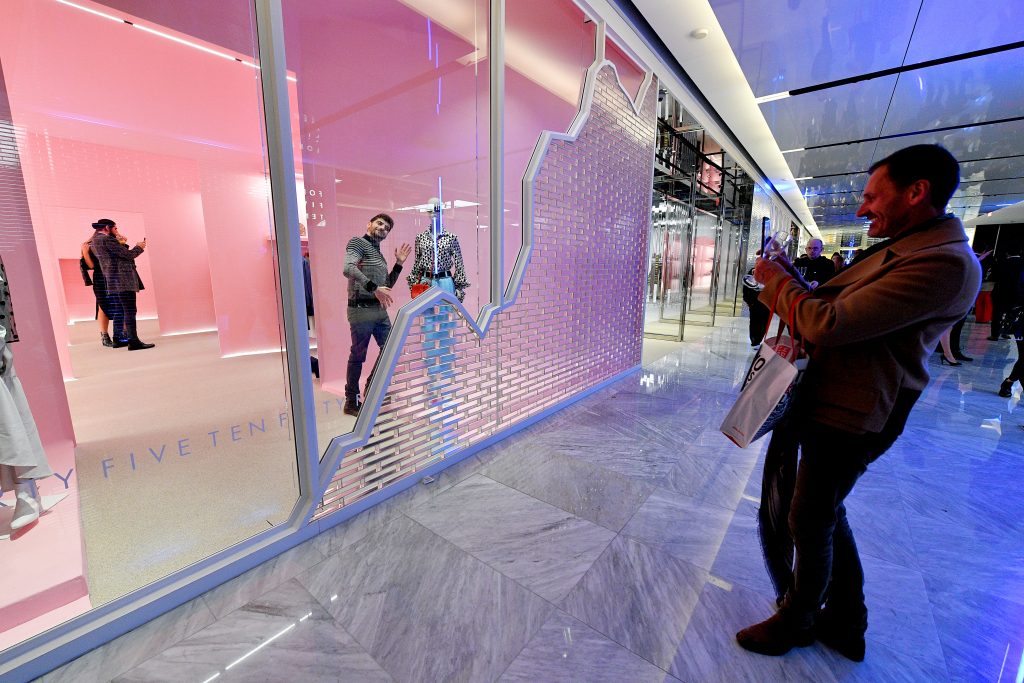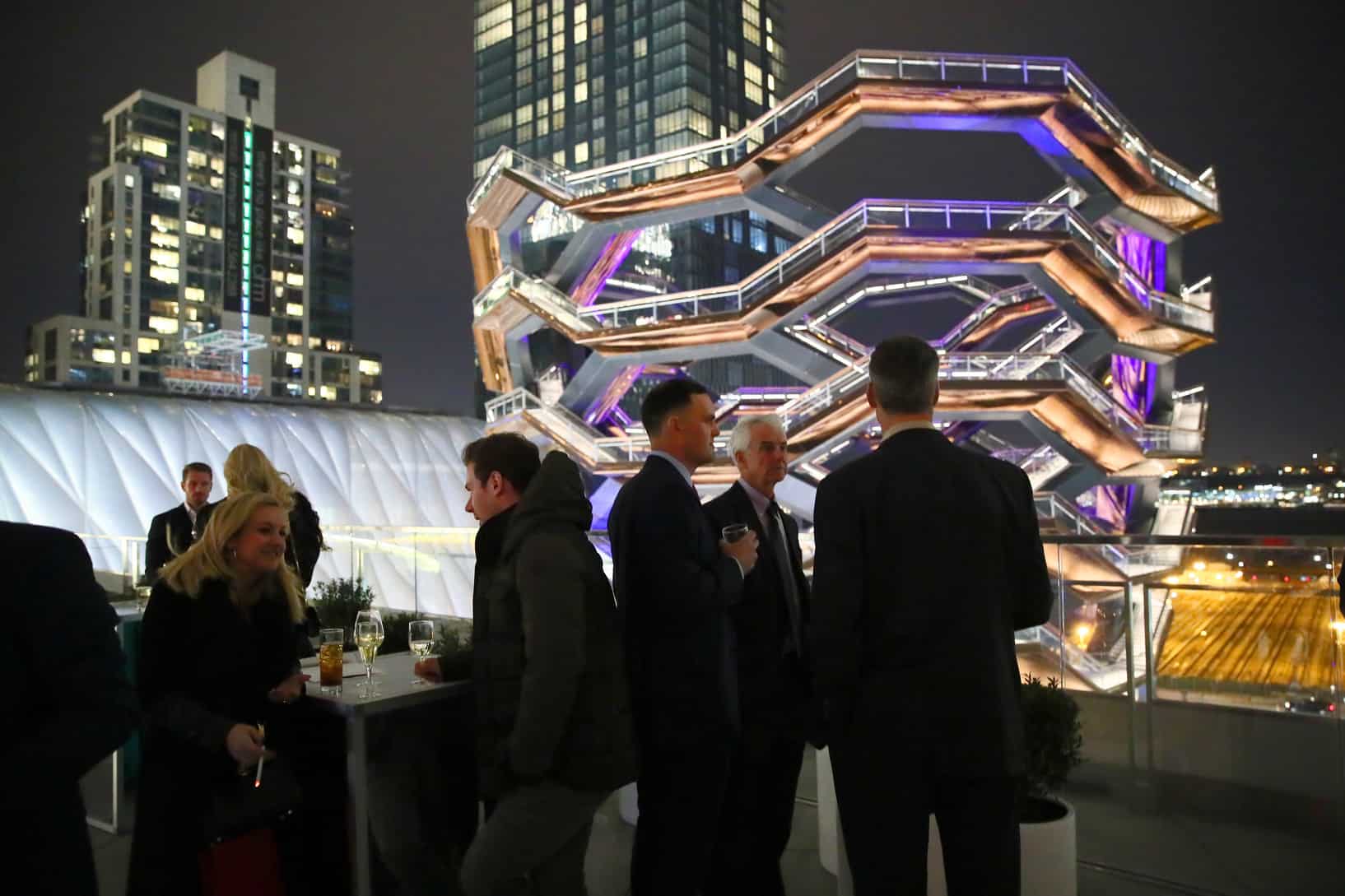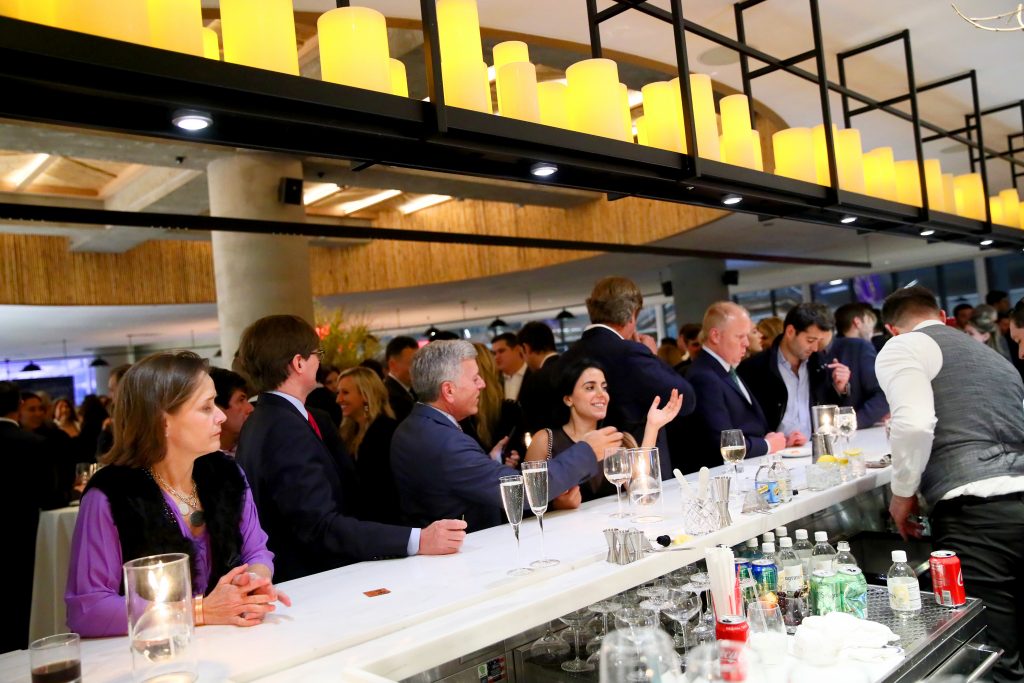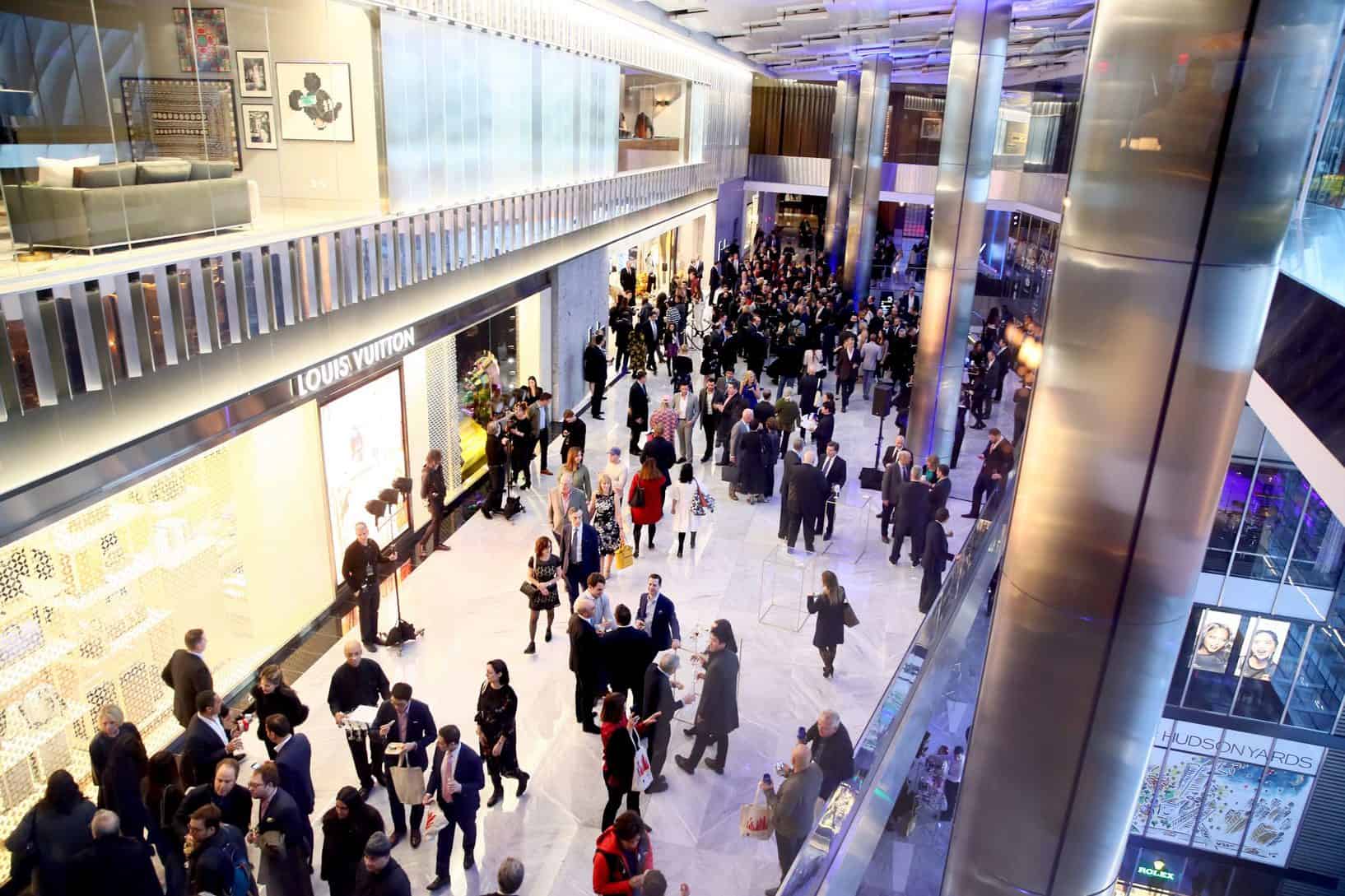HUDSON YARDS OFFICIALLY OPENS

Over an estimated 13,000 people turned out last night to get a sneak peek of The Shops & Restaurants at Hudson Yards. The celebratory bash was the culmination of years of hype and expectation for New York City’s newest live/work/shop neighborhood.
At the event, guests shopped first-to-New York and next-generation retail concepts from top global fashion brands and got a first-taste of new culinary concepts from world-class chefs and restauranteurs including Thomas Keller, José Andrés, David Chang, Eunjo Park, Michael Lomonaco, Anya Fernald, Costas Spiliadis, D&D London, rhubarb and more.
Officially opening today, New Yorkers and visitors are able to visit for the first time the Public Square and Gardens, a new five-acre public space; its centerpiece, an interactive landmark temporarily known as Vessel; and The Shops & Restaurants, a one-million-square-foot retail center featuring a collection of more than 100 diverse shops and culinary experiences. Tenants have begun moving into 55 Hudson Yards and 30 Hudson Yards, two large-scale commercial towers, and residential occupancy is underway at 15 Hudson Yards. 10 Hudson Yards opened in May of 2016. The opening of Hudson Yards, built atop the MTA’s John D. Caemmerer West Side Storage Yard, brings together for the first time the West Side and the neighboring districts of Chelsea and Hell’s Kitchen.

A model for the 21st-century urban experience, Hudson Yards is an unprecedented mix of buildings, parks, utilities and public spaces that combine to form a connected, responsive, clean, reliable and efficient neighborhood. Planned as the first LEED certified neighborhood, Hudson Yards is home to a first-of-it-kind microgrid and two cogeneration plants that will save 24,000 MT of CO2e greenhouse gases from being emitted annually by generating electricity and hot and chilled water for the neighborhood—more than twice as efficiently as conventional energy sources. Additionally, nearly 10 million gallons of storm water will be collected from building roofs and public plazas, then filtered and reused in mechanical and irrigation systems. The development of Hudson Yards also provides for over 1,300 new or permanently preserved affordable units onsite and in the neighborhood, 14 acres of public space and a new K-8 public school.
Hudson Yards is an economic engine for New York City, already contributing more than $10 billion to the City’s GDP during construction and serving as a significant source of revenue to the MTA. It is expected to pay the MTA $2.36 billion during construction and $66 million annually. It will also pay almost $100 million per year in tax revenue that will be available for debt service on the bonds issued for the No. 7 Subway line extension — a truly successful public/private partnership. Once fully developed, Hudson Yards will contribute nearly $19 billion annually to New York City’s Gross Domestic Product (GDP), and nearly $1 billion annually in State and City taxes. The companies and buildings at Hudson Yards will bring over 57,000 jobs to the new West Side neighborhood and Hudson Yards also estimates that, over the next six months, upwards of 600 new jobs will be filled by the developers and management team to provide essential services at the development, most of whom will be represented by SEIU 32BJ, plus thousands of additional jobs at restaurants and other campus businesses.

The City’s goal to transform the broader 42-block Hudson Yards District from a largely vacant, underdeveloped area into a vibrant mixed-use neighborhood of workers, residents and visitors is also being achieved ahead of projections, with over 30 million square feet of new development completed or in construction since the rezoning in 2005. The $3.5 billion infrastructure investment that the City made, or has committed to fund, through the Hudson Yards Infrastructure Corporation (HYIC) bonds is paying off as the essential first step to attract vast private investment in the District that otherwise would not have occurred. It is now estimated that future revenues from the District will not only pay off the bonds that funded the subway extension, but will generate more than $21 billion in net revenues to the City, creating an enormous new revenue stream to fund future services. Additional benefits to the City include over 3,000 new affordable housing units accounting for 28% of all new housing in the district.
Governor Cuomo said, “The development of Hudson Yards has transformed the West Side of Manhattan, creating jobs and economic opportunity for New Yorkers. With the building of a new Pennsylvania Station-Moynihan Farley complex, we are going to connect this emerging neighborhood to a world-class 21st-century transportation hub. Today marks our continued commitment toward building an even more sustainable City and region, and we are proud to be creating a stronger future for our state.”



